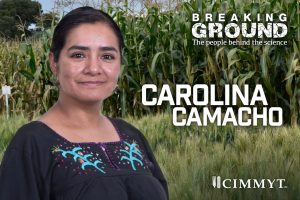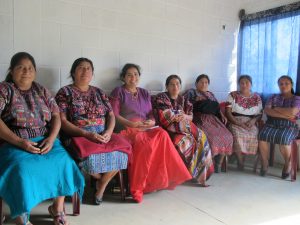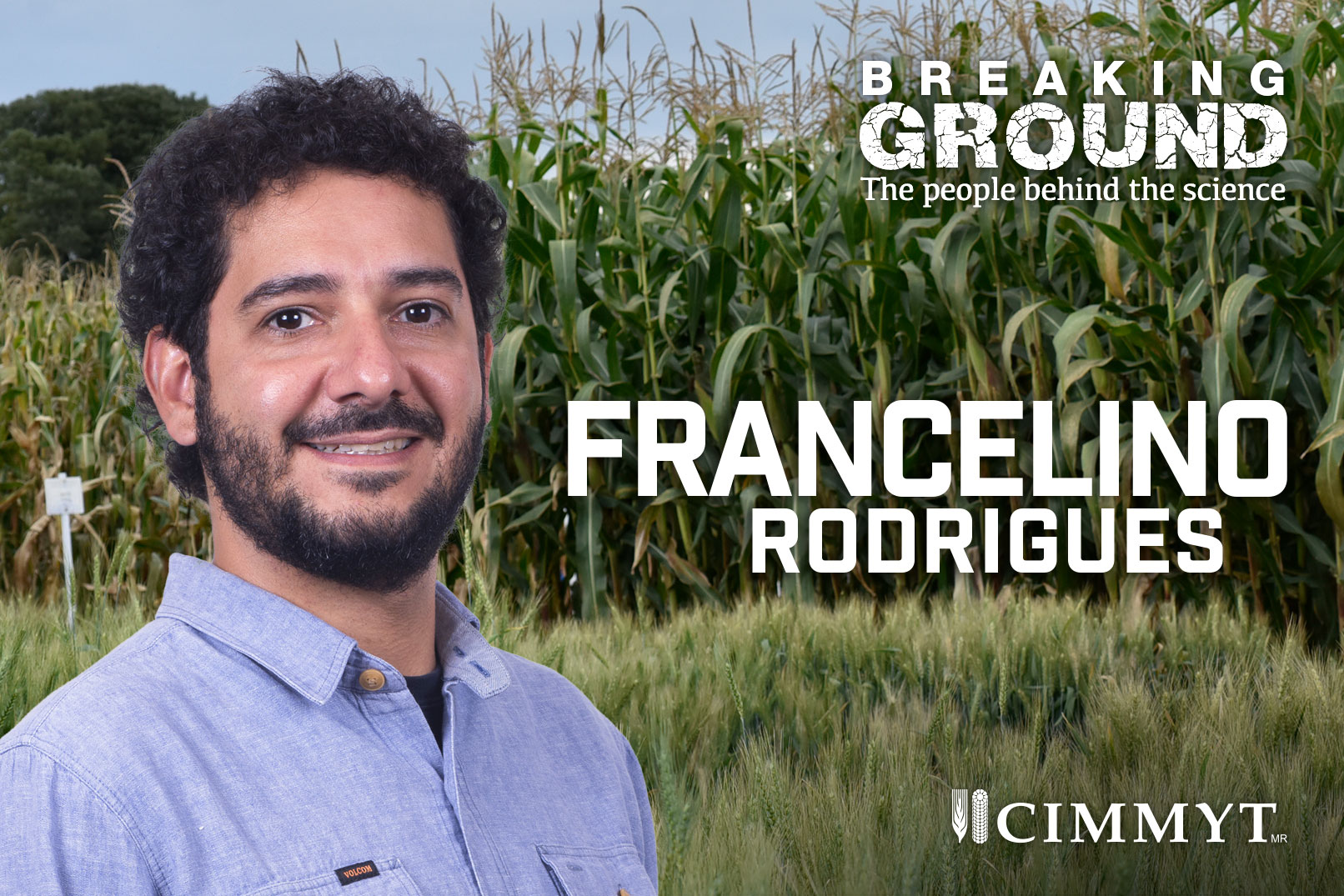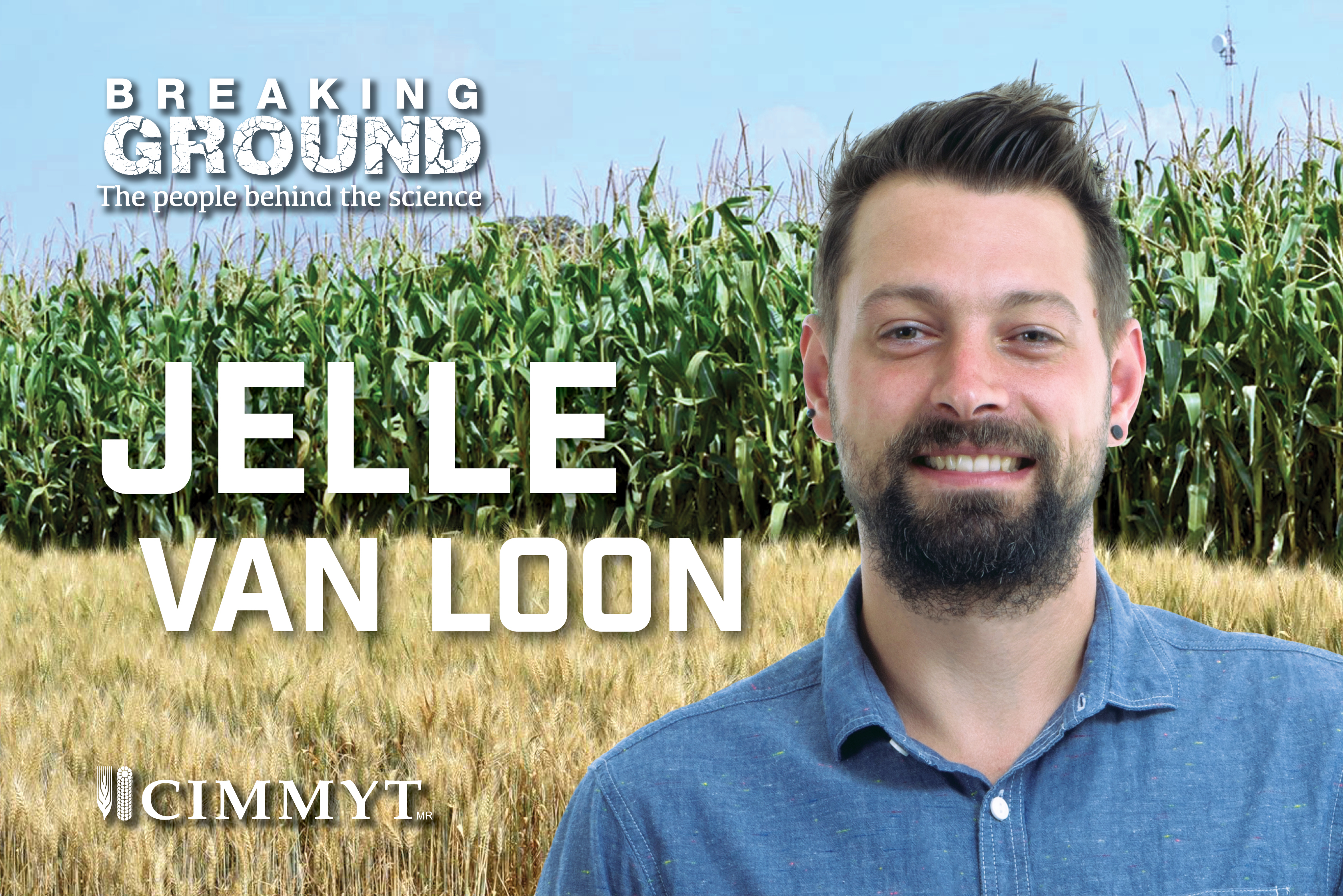 EL BATAN, Mexico (CIMMYT) – Tending her own crops gives Carolina Camacho insights into the challenges farmers face that she could never have learned in a classroom.
EL BATAN, Mexico (CIMMYT) – Tending her own crops gives Carolina Camacho insights into the challenges farmers face that she could never have learned in a classroom.
Growing up in the metropolis of Mexico City, the historical and political importance of agriculture was never lost on Camacho, who works as a principal researcher at the International Maize and Wheat Improvement Center (CIMMYT).
“As a teenager, I would debate my sister over the most pressing issue that faced our country, Mexico. For me it was always in agriculture,” Camacho said. “I strongly believe if we are to improve our country, we must improve the lives of our campesinos (smallholder farmers).”
With no knowledge of farming, but with a passion to bring about change, she took to the field, studying crop science at Chapingo University, on the outskirts of the city in the State of Mexico. Having to brave early morning starts, she learned the basics of agriculture, and a love for the genetic diversity of maize.
Mexico, considered the birthplace of maize, is home to a rich diversity of varieties that has evolved over years of domestication by farmers. Camacho was introduced to this diversity firsthand, interning at CIMMYT’s maize germplasm bank as an undergraduate.
Interested in discovering how conserving maize diversity played out in farmers’ fields she gravitated towards an on-farm conservation project in rural Mexico. Working with indigenous farmers, Camacho learned how traditional knowledge and practices relate to environmental management, agricultural production and the diversity of native maize varieties.
After earning a master’s degree in the conservation and utilization of genetic resources, Camacho felt that crop science was isolated from the daily life of farmers. Thus, in a move to study the relationship between humans and plants, she embarked on a multidisciplinary doctoral in the sociology of rural development at Wageningen University in the Netherlands.
While conducting her research, Camacho lived with indigenous farmers in Mexico’s Lacandon rainforest in the state of Chiapas. Alongside local Mayan farmers she cultivated her own milpa – a farming system used by indigenous farmers in Latin America, which typically involves intercropping maize, beans and squash. Her hands-on fieldwork allowed her to study cultivation practices outside the scope of purely agronomic activities, but also as political, social and cultural actions.
“Farming alongside the Tzeltal people, I saw how my own cultivation practices were interwoven with everyday life,” said Camacho. “Farming was influenced by religious ceremonies, health and family affairs as well as political struggles for land. It had to cope, adapt and overcome these challenges.”
Today, these lessons learned guide Camacho as she investigates how agricultural innovations, including drought-tolerant crops, fertilizer and land management approaches can be farmer inclusive and tailored to local contexts as part of CIMMYT’s sustainable intensification strategy for Latin America.
Sustainable intensification aims to enhance the productivity of labor, land and capital. They offer the potential to simultaneously address a number of pressing development objectives, including unlocking the agricultural potential to adapt production systems to climate change, sustainably manage land, soil, nutrient and water resources, improved food and nutrition security, and ultimately reduce rural poverty.

Smallholder farmers, who manage small plots of land and handle limited amounts of productive resources, produce 80 percent of the world’s food. The United Nations calls on these farmers to adopt agricultural innovations in order to sustainably increase food production and help achieve the “Zero Hunger” U.N. Sustainable Development Goal. However, these farmers seldom benefit from new techniques to shore up efforts to meet the goal.
“An agricultural scientist can tell a farmer when and how to plant for optimal results, but they do not farm in a bubble, their practice is affected by the ups and downs of daily life – not only by climate and agronomy but also by social and cultural complexities,” Camacho said.
“One of the biggest challenge is to recognize the heterogeneity of farmers and leave behind the idea of one size solution to their diverse problems and needs,” said Camacho. By understanding a farmer’s lifestyle, including access to resources and information, levels of decision making in the community and the role of agriculture in their livelihood strategy, researchers can best identify complementary farming practices and techniques that not only boost productivity but also improve livelihoods.
“It’s important to think about agricultural innovations as social processes for change in which technologies, like improved seeds or agronomic practices, are only one element,” said Camacho. “It is key that we recognize that changes will not only occur in the farmer’s field but also in the behavior of other actors in the value chain, such as input suppliers, traders, government officials and even researchers.”
Camacho studies how innovations are promoted and adopted in different regions to aid their smooth delivery to farmers and community members from different genders, ethnicities and ages.
When working with indigenous communities, she ensures cultural values of the milpa system are taken into account, thus promoting the agricultural tools and techniques that do not detract from the importance of the traditions associated with the milpa practice.
“The milpa system is a clear example of how agriculture in general and maize in particular contribute to the construction of the cultural identities of indigenous people. We should be aware of the consequences that innovations will have not only for environmental sustainability but also for the sustainability of the Mayan Culture,” she said.
“Let’s not forget, we can’t separate culture from agriculture,” Camacho finished.
Camacho studies the process in which researchers promote agricultural innovations and how farmers adopt them through the Sustainable Modernization of Traditional Agriculture (MasAgro) project, supported by Mexico’s Ministry of Agriculture, Livestock, Rural Development, Fisheries and Food (SAGARPA). Together with other researchers, Camacho has documented how MasAgro is promoting innovations in different regions of Mexico by responding to specific regional challenges and opportunities. Currently she is supporting scaling efforts for these innovations by ensuring that they will be sustainable and inclusive.
In the same line of inclusiveness, Camacho is working with two projects in the milpa system. The first one is the Buena Milpa project funded by U.S. Agency for International Development’s Feed the Future program and in collaboration with the Guatemala Agricultural Science and Technology Institute. The second one is the Milpa de Yucatan project sponsored by a private Mexican foundation in Yucatan Peninsula. Both projects promote sustainable intensification innovations in the milpa systems.
 Climate adaptation and mitigation
Climate adaptation and mitigation 


